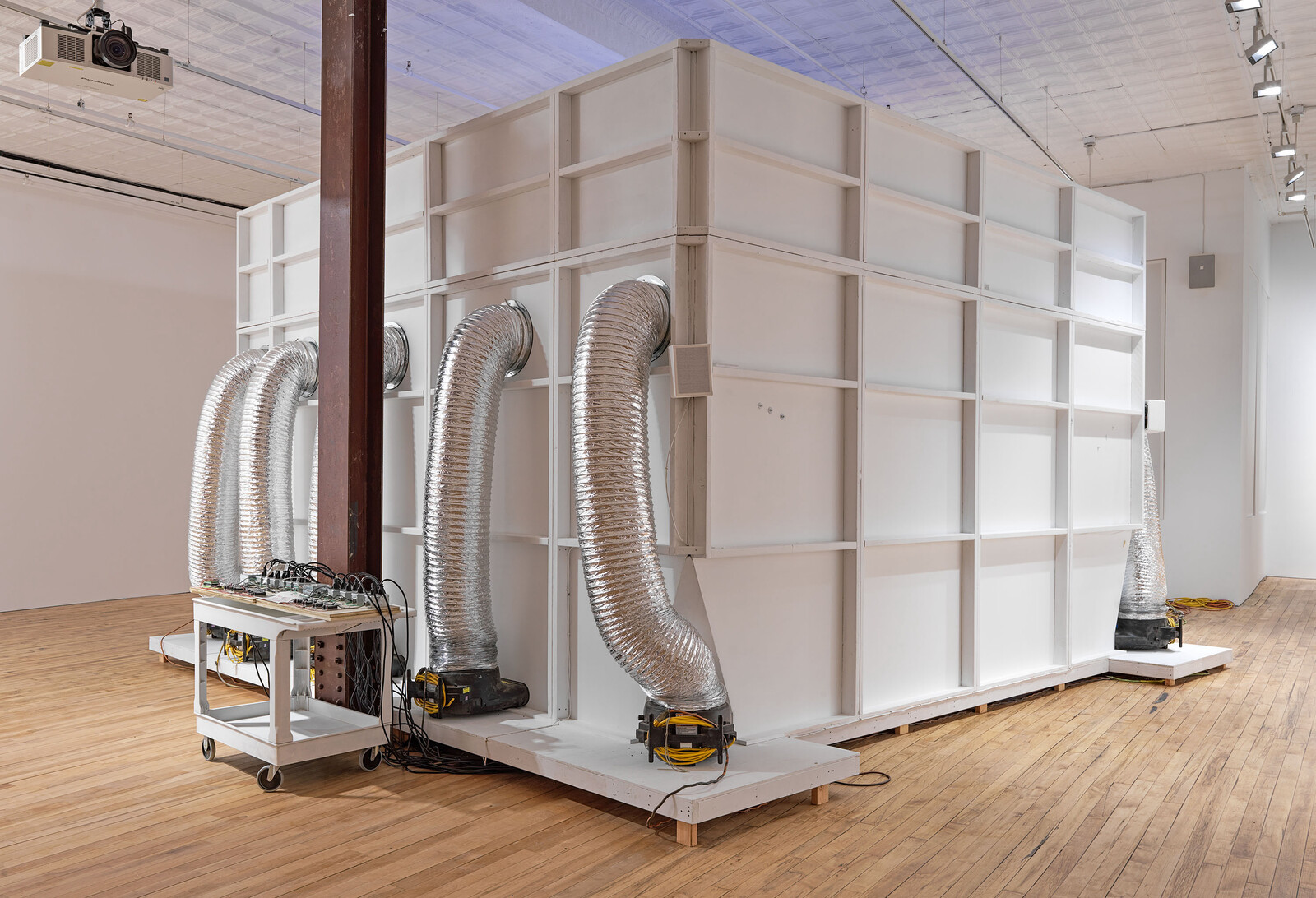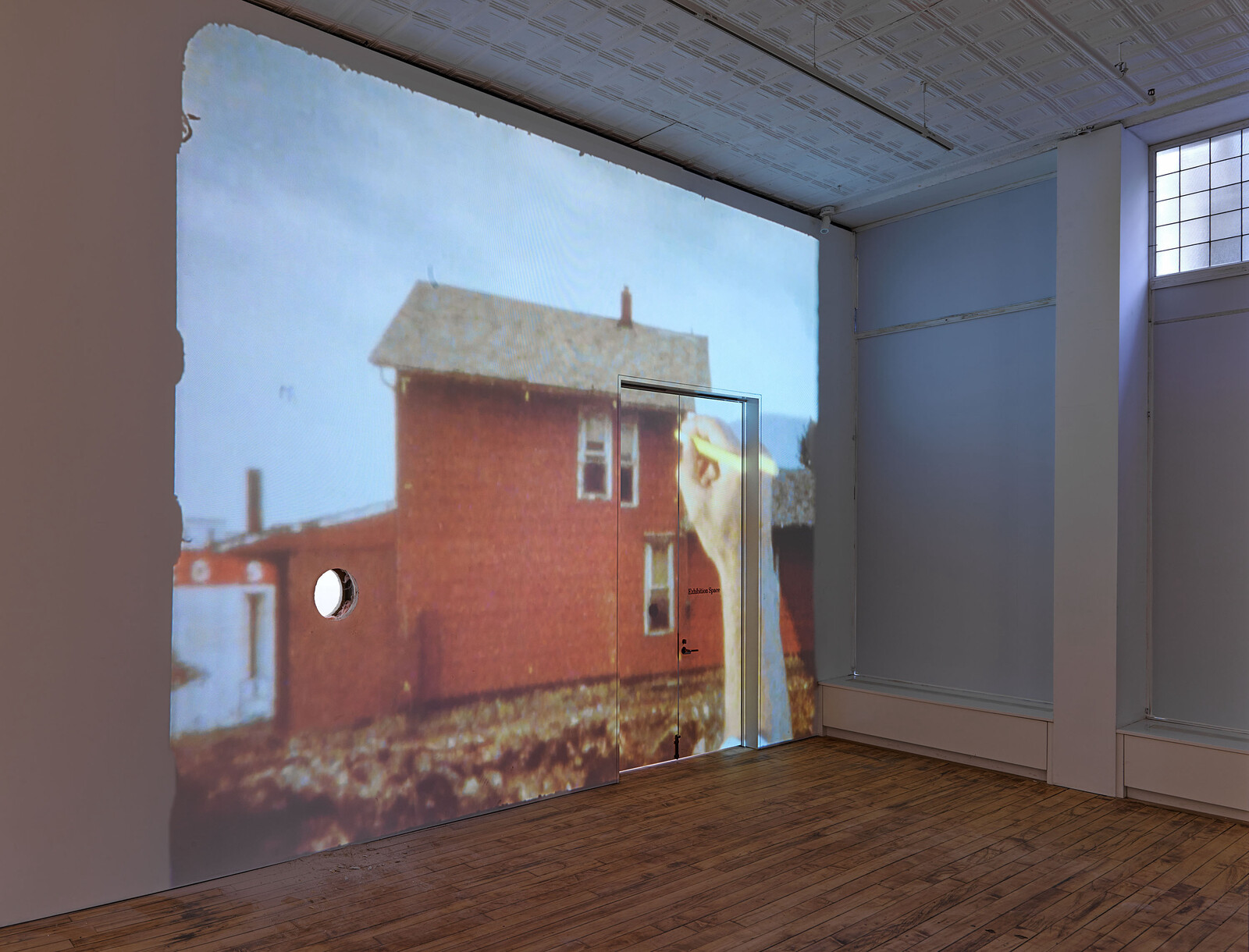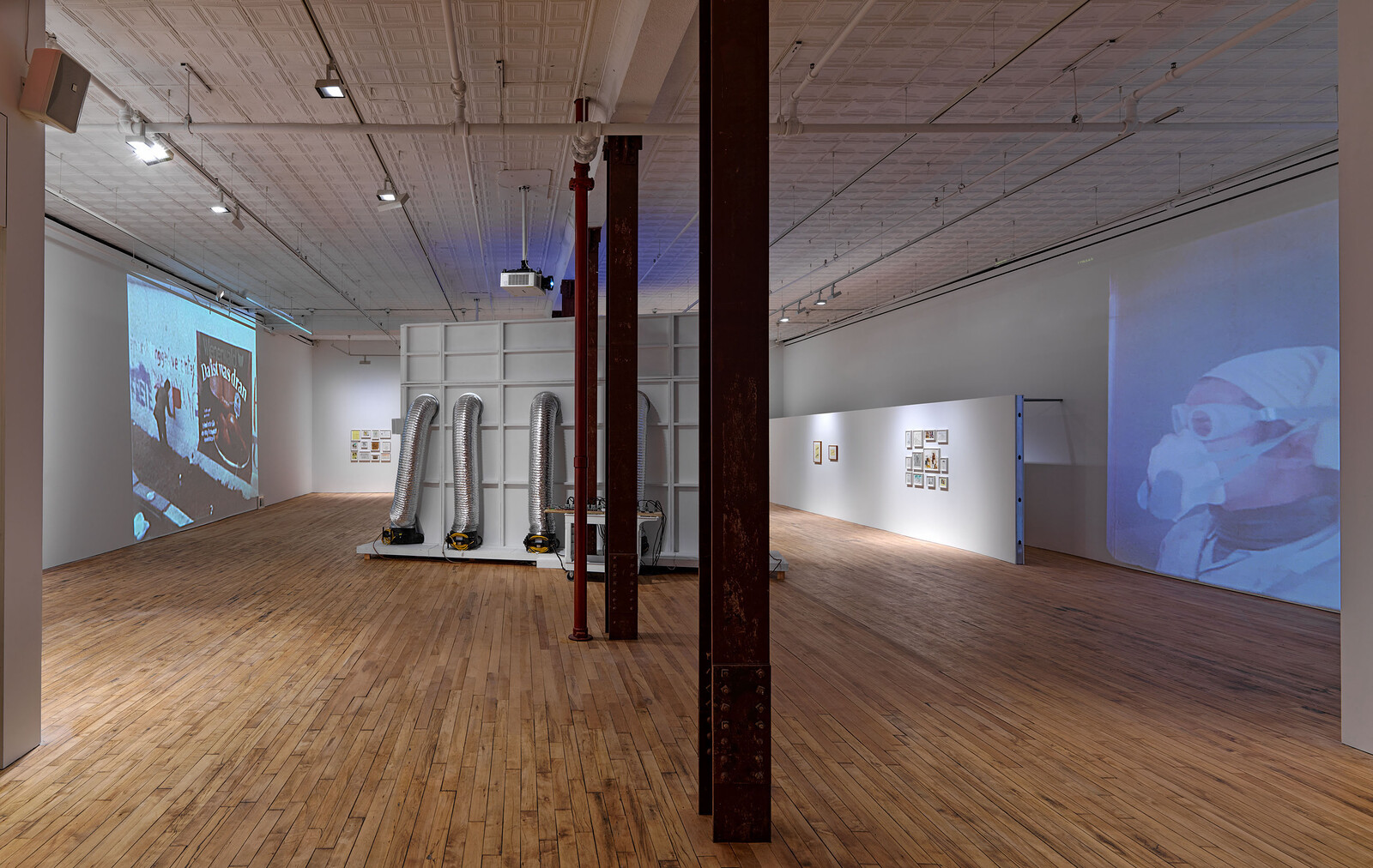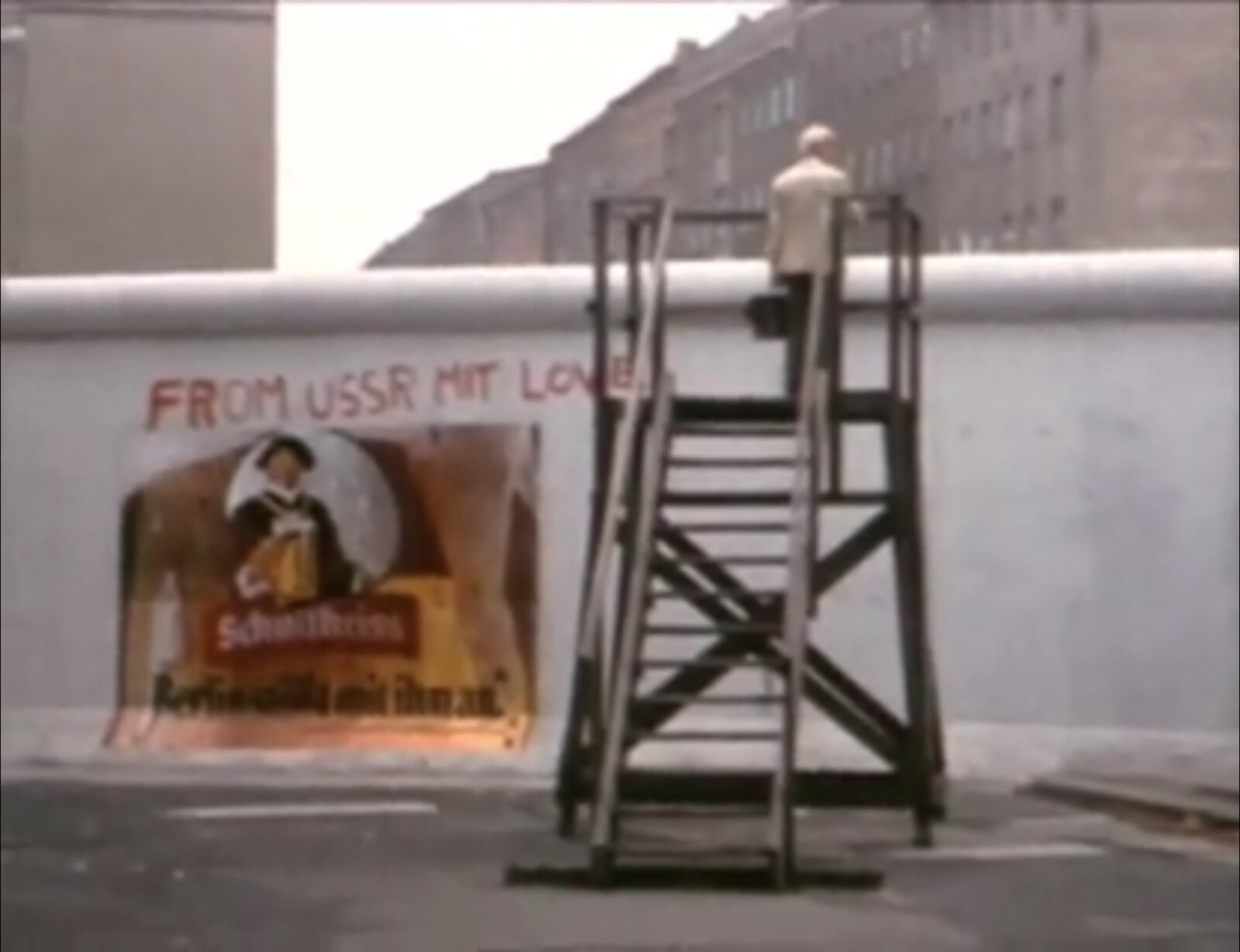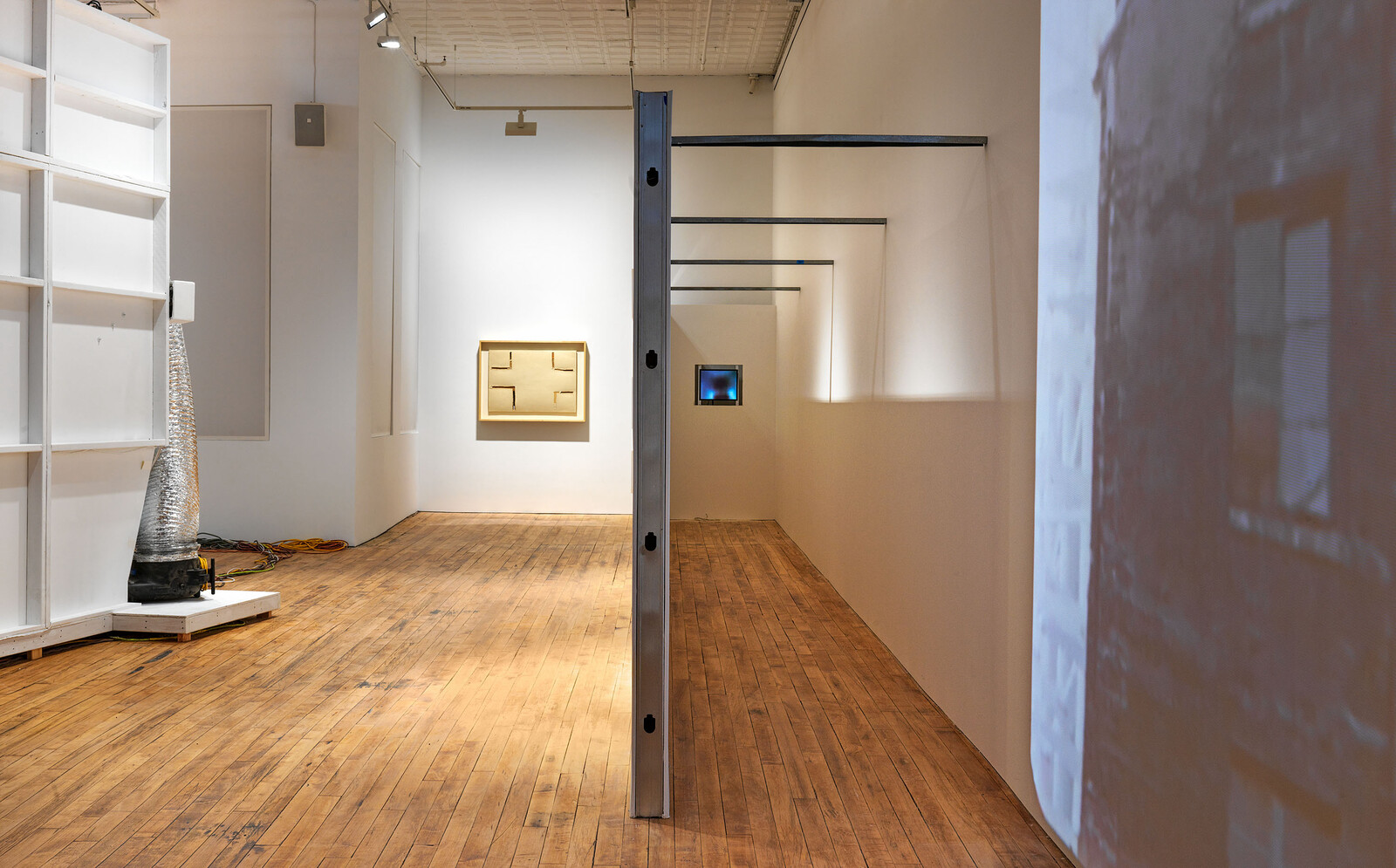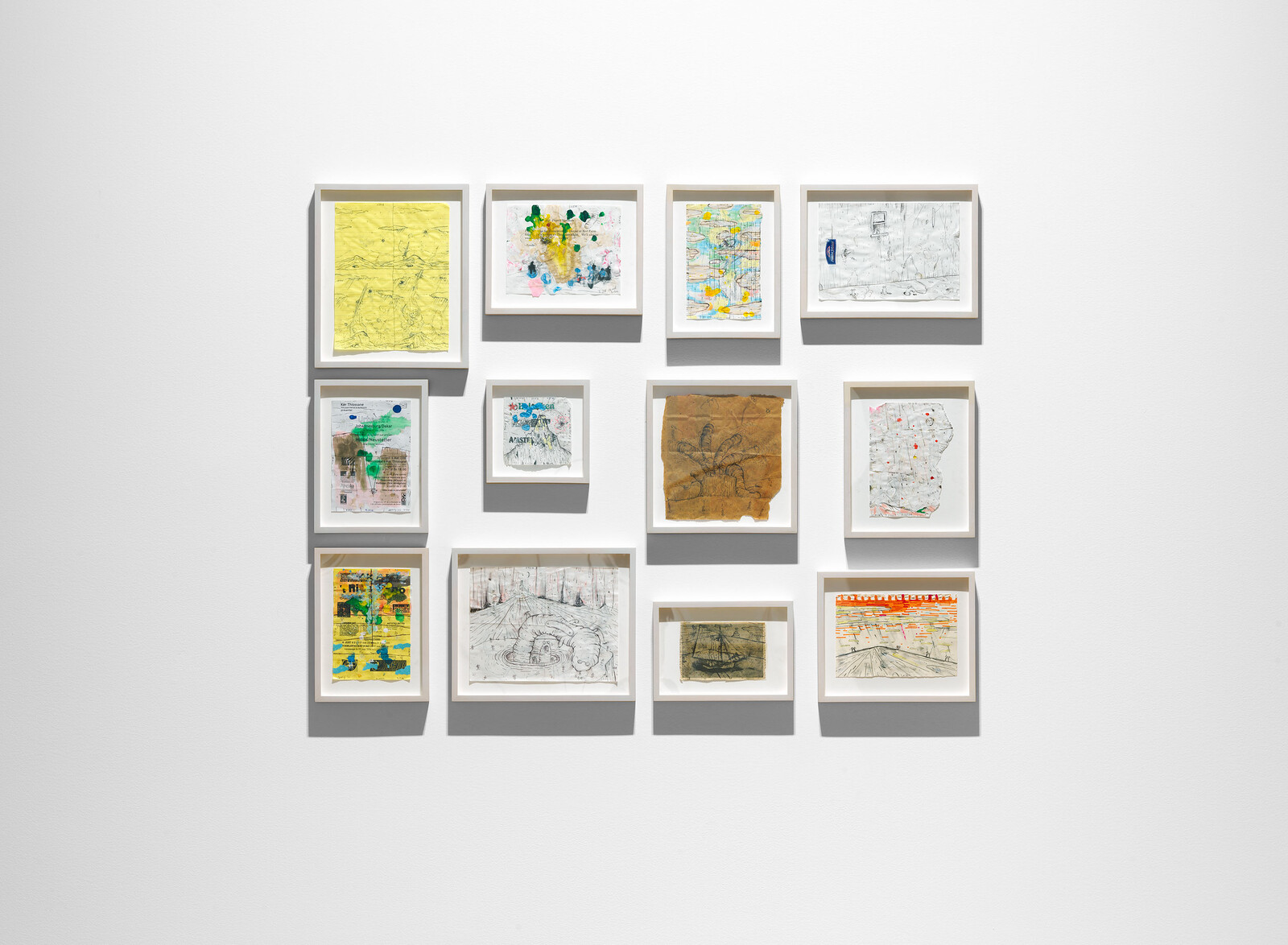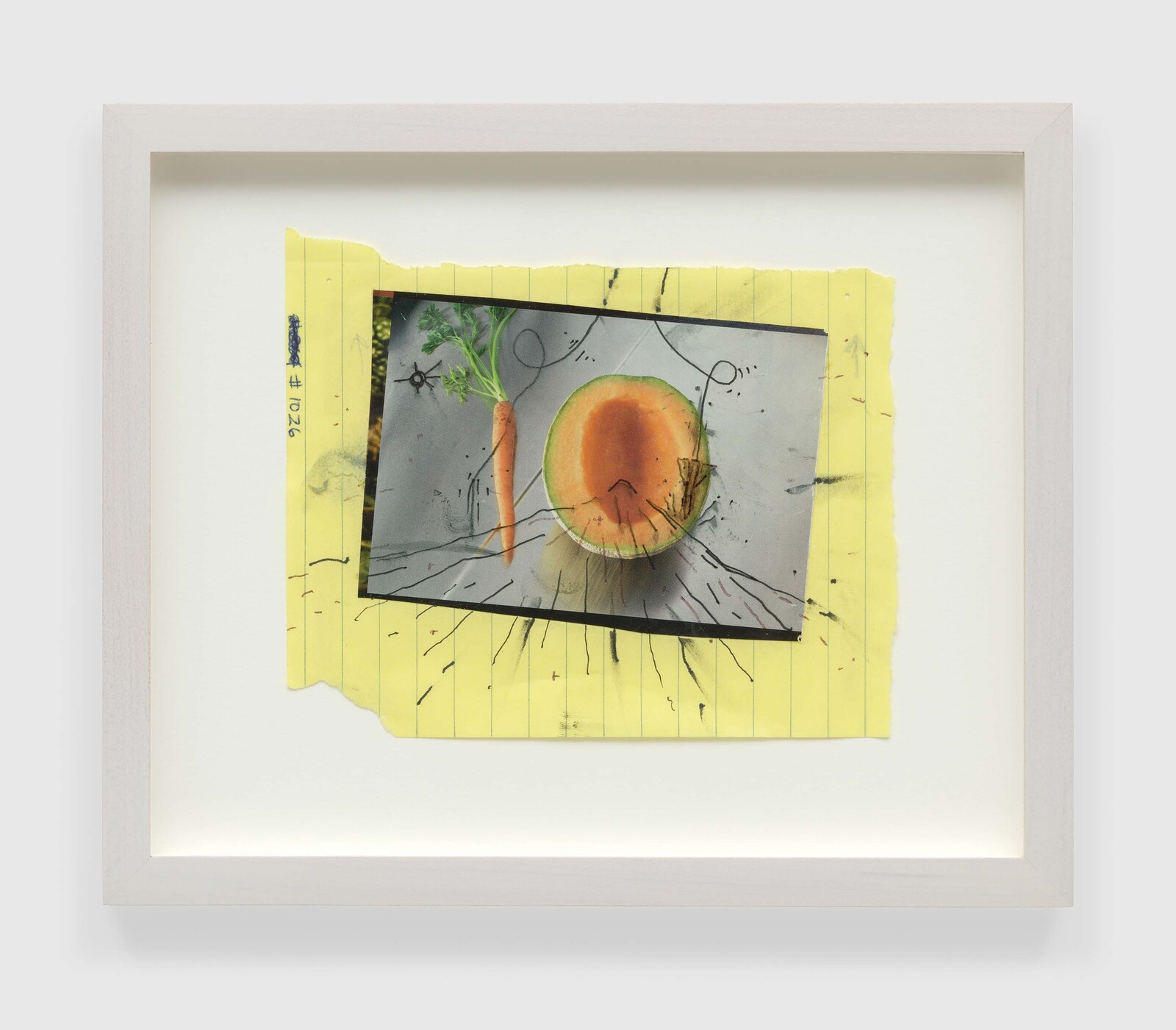Gordon Matta-Clark’s film Bingo X Ninths (1974), which features a precise dismantling of all but the core of an abandoned house, has been projected at large scale along the first wall of 52 Walker. The door to the exhibition space intersects the projection, such that gallery visitors irrupt onto the image as they enter and exit. A perfectly circular hole, cut straight through the same gallery wall, also interferes with the clean transmission of the film. A layer of dust from this incision lines the gallery floor.
It’s tempting to view such strategies as a literal self-reflexivity built into the gallery design: Matta-Clark’s canonical building cuts overflowing onto the gallery’s walls, making their mark on the present architectural space. Yet the pairing of Matta-Clark and Pope.L for “Impossible Failures” performs a different function, complicating Matta-Clark’s practice on a more fundamental plane. Here, Matta-Clark appears to work vertically, in the air, through various forms of physical suspension, while Pope.L works laterally, low-to-the-ground, worm-like. Drawings by Matta-Clark with subjects such as High Rise Excavation Diving Tower (1974) show lofty engineering schemes that seem to resist the pull of gravity. The artist’s three exhibited films all emphasize, to varying degrees, aerial vantage points or a strategic resistance to collapse—from Conical Intersect (1975)’s dramatic vistas over Paris; to The Wall (1976/2007), in which a ladder lifts West German viewers to see over the top of the Berlin wall; to Bingo’s vertical cuts into a two-story structure. At choice moments, Pope.L’s works have even been presented literally below Matta-Clark’s (one of his “Failure Drawings” is hung directly below The Wall, nearly on the floor).
The pairing of these two artists—both obsessed by risky, raw encounters with the built environment, here along opposite axes—shifts the monumentality of Matta-Clark’s urban cut-ups towards the crawlspaces Pope.L is wont to inhabit. Vice versa, Pope.L’s pairing with Matta-Clark opens onto the machinic underbelly of his practice. Much of Pope.L’s oeuvre—particularly his well-known, crawl-based performance works that take him on hands and knees across New York City—play with the visceral embodiment of lack and abjection to trace the deprivations of American life. Others focus on salvaged materials gathered from the street or amassed over time: a tendency echoed here in the “Failure Drawings” made between 2004 and ’06 and sketched directly onto found ephemera, many centering worms and earthbound crevices. Voids are central to Pope.L’s work—so much that the artist penned a “Hole Theory,” an artist book from 2002, on their constitutive importance to his practice. Yet here, with body absent, “Impossible Failures” centers the machine as metabolizer of lack—chewing up the void and spitting it back out in a swarm of dust.
Pope.L’s Vigilance a.k.a. Dust Room (2023)—an enclosed white cube with large air ducts coming out each side—dominates the core space of the exhibition. A sign laid atop a utility cart warns Vigilance should not be operated: “not ready for safety.” On either wall, two more Matta-Clark films are shown at large scale. Matta-Clark’s landmark Conical Intersect—documenting the creation of one massive hole through Paris buildings that would later be demolished to build the Centre Pompidou—is projected between two walls, along a gallery corner. Drawings by both artists are featured throughout the space.
In its configuration here, projected along the right-angle of two adjacent walls in 52 Walker’s space, Conical Intersect appears to slightly distort and elongate the growing architectural hole that is the focal point of Matta-Clark’s video. Opening its maw around the viewer, this voided incision becomes elliptical—tunnel, portal. A video by Pope.L is installed directly left, set at the end of a narrow makeshift corridor. In the center of the gallery, Vigilance—whirring loudly and connected to bundles of wires, its ducts shaking from the pressure of rapid airflow—retains the appearance of a self-sustaining system, even if its warning sign seems to promise imminent implosion.
Contrasting the monumental, almost telescopic apparatus that Conical Intersect becomes throughout the course of Matta-Clark’s video, Pope.L indulges our interest in viewing the belly of his device with only two small windows. No simple viewports into the otherwise closed work, they show an interior space lined with reflective material and saturated by a disorienting swirl of blue and white “particles.” Vigilance’s inside might be even more obscure (more absurd) than the exterior of the machine. The interior comes off as a game or trick, withholding whatever complex structural core seemed evident from Vigilance’s exterior architecture.
In a similar manipulation of visibility, Pope.L’s video Dust Eater a.k.a. White Woman Eating A Donut (2007–2009/2022) renders its subject’s mastication and persona almost unrecognizable—simultaneously exaggerating and blurring it, as though the consumption were turned inside out. The film appears less like a body in the process of consuming than a machine digesting the body. These works seem to highlight the everyday abrasions that common infrastructures continually expose us to. “Dust”—like the particles swirling in Vigilance, or the powdery residue filling the air of Conical Intersect—becomes a distraction from inevitable precarity, a spectacle of our own decomposition. Rather than compulsively “eating the dust”—consuming it as fascination, or creating “cuts” that fill the air with it—we might, Pope.L suggests, confront it more directly, attend to surfaces: crawl.
In “Impossible Failures,” Pope.L’s grounding force runs the show—the gravitational pull against which Matta-Clark’s stripped-down building cores seem to be suspended is constantly confronted by Pope.L’s rooted sensibility. Matta-Clark’s anarchitecture comes off as an “impossible failure” to the degree that these architectural destructions inevitably tend, albeit subversively, toward the monumental. Compared to Matta-Clark’s dramatic cuts, Pope.L’s granular “dusts” perhaps more closely approach the paradoxical materiality of the voids underlying infrastructure’s failures and possibilities.
